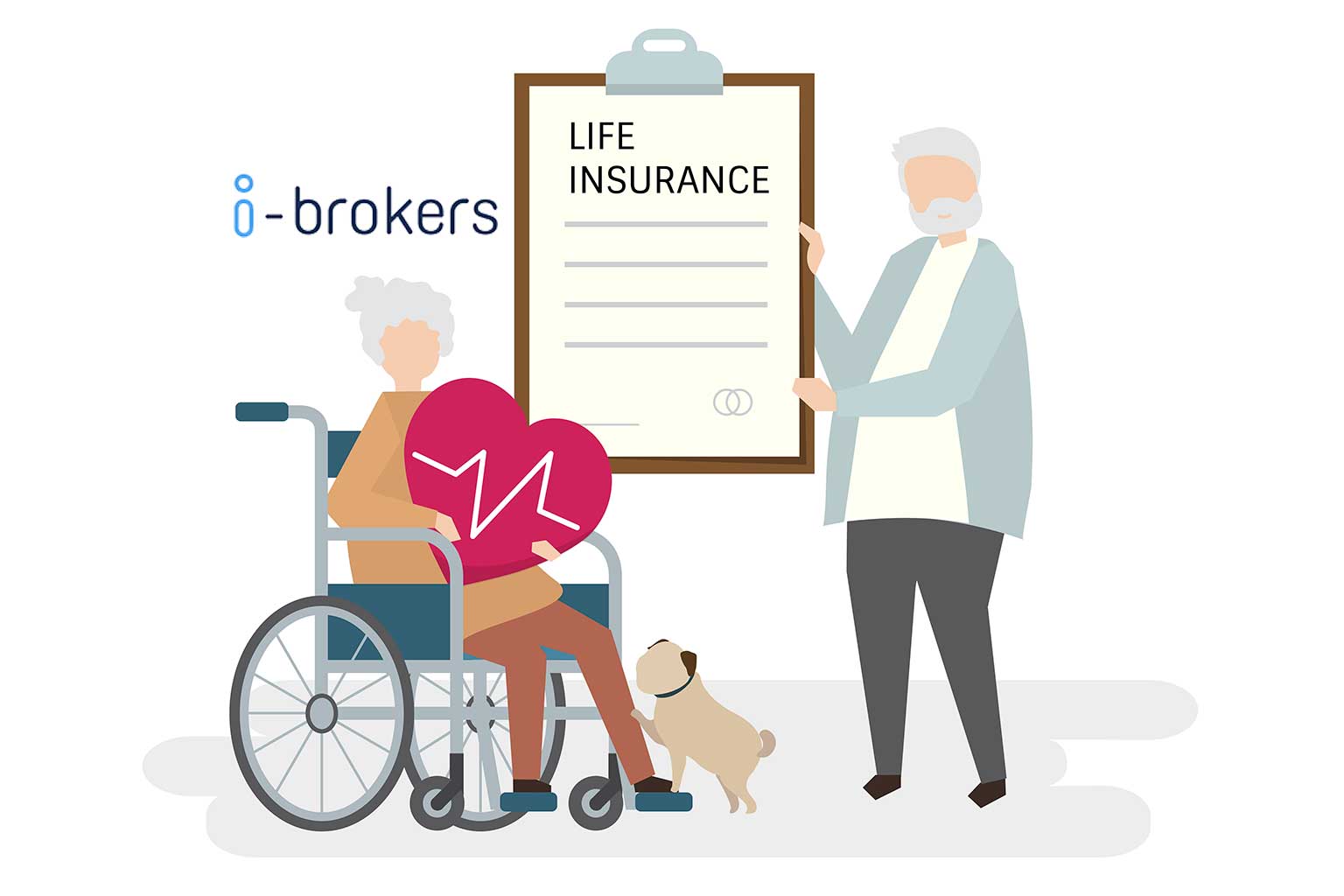

Finance
What Is Level Funding Insurance
Modified: February 21, 2024
Discover the benefits of level funding insurance and how it can help with your finance needs. Explore our comprehensive guide today.
(Many of the links in this article redirect to a specific reviewed product. Your purchase of these products through affiliate links helps to generate commission for LiveWell, at no extra cost. Learn more)
Table of Contents
- Introduction
- What is Level Funding Insurance?
- How Does Level Funding Insurance Work?
- Advantages of Level Funding Insurance
- Considerations before Choosing Level Funding Insurance
- Is Level Funding Insurance Right for Your Business?
- Comparing Level Funding Insurance with other Health Insurance Options
- Conclusion
Introduction
Welcome to the world of level funding insurance, a unique and innovative approach to providing health insurance for businesses. With the rising costs of healthcare, it has become increasingly difficult for small and medium-sized businesses to offer competitive benefits packages to their employees. This is where level funding insurance comes in, offering a cost-effective alternative that combines the benefits of self-funding with the stability and predictability of fully insured plans.
Level funding insurance has gained popularity in recent years as a viable option for businesses, providing the flexibility and control of self-funding arrangements, while minimizing the financial risk associated with traditional self-insurance plans. This article will delve into the intricacies of level funding insurance, explaining how it works, its advantages, and the factors to consider before choosing this option for your business.
Whether you are a small business owner looking to provide comprehensive health coverage to your employees or a larger organization seeking ways to optimize your benefits spending, understanding level funding insurance is crucial in making informed decisions regarding your company’s healthcare strategy.
Throughout this article, we will explore the mechanics of level funding insurance, outline its benefits, and discuss the key considerations to keep in mind when evaluating whether it is the right fit for your business. We will also compare level funding insurance with other health insurance options to provide a well-rounded perspective.
So, if you are curious about how level funding insurance can help your business stay ahead in the ever-changing landscape of healthcare, continue reading to gain valuable insights and make informed decisions that align with your company’s goals and objectives.
What is Level Funding Insurance?
Level funding insurance is a hybrid form of health insurance that combines aspects of self-funding and traditional fully insured plans. It is designed primarily for small to mid-sized businesses that want to have more control over their healthcare costs while mitigating the financial risk associated with self-insurance.
In a traditional fully insured plan, the employer pays a fixed premium to an insurance carrier, who assumes the financial risk for providing healthcare coverage. The premium amount is calculated based on the number of covered employees and the anticipated healthcare expenses. If the actual costs exceed the premiums paid, the insurance carrier covers the additional expenses. However, if the costs are lower than expected, the carrier keeps the surplus.
On the other hand, self-funding is a method where the employer takes on the financial responsibility of providing healthcare benefits directly to its employees. In this arrangement, the employer pays for claims and administrative expenses as they arise, rather than paying fixed premiums to an insurance carrier. While self-funding offers greater flexibility and cost control, it also exposes the employer to a higher level of financial risk.
Level funding insurance bridges the gap between these two approaches, offering employers the benefits of self-funding while providing financial protection through a stop-loss insurance policy. Under a level funding arrangement, the employer pays a fixed monthly amount to a third-party administrator (TPA), which is a company that manages the claims and administrative processes. The TPA then uses this money to pay for employee healthcare claims.
The key feature of level funding insurance is that the monthly payment is based on the projected claims costs for the year, which are determined by the employer’s historical claims data, industry benchmarks, and the advice of the TPA. This allows for predictability and stability in budgeting, as the employer is not subject to the fluctuations of a fully insured premium based on a larger risk pool.
In cases where the actual claims expenses exceed the projected amount, the stop-loss insurance kicks in to cover the excess costs. Stop-loss insurance protects the employer from catastrophic claims and provides an added layer of financial security. It kicks in once the total claims for the year exceed a specified amount, known as the “attachment point.” The stop-loss insurance can be either specific (for individual high-cost claims) or aggregate (for the total claims of the entire group).
Overall, level funding insurance offers small and mid-sized businesses the opportunity to have more control over their healthcare costs, access better claims data and analytics, and potentially save money compared to traditional fully insured plans. It provides the stability and predictability of budgeting associated with fully insured plans, while allowing the employer to retain any surplus funds. It is important to note that level funding insurance is not available in all states and may have specific eligibility requirements based on the size and stability of the business.
How Does Level Funding Insurance Work?
Level funding insurance operates on a relatively straightforward model, combining elements of self-funding and fully insured plans. Understanding how level funding insurance works is key to determining if it is the right fit for your business.
Here is a step-by-step breakdown of how level funding insurance works:
- Determining the Premium: The first step in setting up a level funding insurance plan is determining the monthly premium. This amount is based on the projected claims costs for the year, taking into account factors such as the number of covered employees, their ages, and historical claims data. The premium is typically lower than that of a traditional fully insured plan due to the employer assuming some level of risk.
- Payment to the Third-Party Administrator (TPA): Once the premium is determined, the employer pays it to a third-party administrator (TPA), who acts as the intermediary between the employer and the healthcare providers. The TPA is responsible for managing claims, providing administrative services, and offering access to a network of healthcare providers.
- Claims Management: The TPA processes and pays employee healthcare claims using the funds received from the employer. The claims are typically submitted through a network of healthcare providers who have agreed to work with the TPA, ensuring access to quality care for employees.
- Stop-Loss Insurance: Level funding insurance includes a stop-loss insurance policy, which protects the employer from catastrophic claims costs. The stop-loss insurance can be specific, covering individual high-cost claims, or aggregate, covering the total claims of the entire group. Once the claims exceed a specified amount, known as the attachment point, the stop-loss insurance kicks in to cover the excess costs.
- Surplus Funds: One of the advantages of level funding insurance is that any surplus funds at the end of the plan year belong to the employer. If the actual claims expenses are lower than the projected amount, the employer retains the remaining funds, providing potential savings compared to traditional fully insured plans.
Throughout the plan year, the employer and the TPA closely monitor claims utilization and expenses. This allows for proactive measures to be taken, such as implementing wellness programs, negotiating better rates with healthcare providers, or modifying plan designs to manage costs effectively.
It is important to note that level funding insurance requires proper financial management and risk assessment. Employers need to be prepared for the possibility of higher claims costs, as they assume some level of financial risk compared to traditional fully insured plans. However, the stop-loss insurance provides a safety net to protect against excessive claims expenses.
Overall, level funding insurance offers businesses the benefit of more control over their healthcare costs, stable premium amounts based on projected claims, and the potential for cost savings. By understanding how level funding insurance works, businesses can make an informed decision regarding their health insurance strategy.
Advantages of Level Funding Insurance
Level funding insurance offers several advantages over traditional fully insured plans and other health insurance options. Understanding these benefits can help businesses make informed decisions when evaluating their health insurance strategies. Here are some key advantages of level funding insurance:
- Cost Control: Level funding insurance provides businesses with a greater level of cost control compared to traditional fully insured plans. By self-funding a portion of the healthcare expenses, employers have the ability to customize plan designs, implement wellness programs, negotiate better rates with healthcare providers, and manage claims utilization more effectively. This can lead to potential cost savings and better allocation of resources.
- Predictability and Stability: With level funding insurance, the monthly premiums are based on projected claims costs, offering stability and predictability in budgeting. This allows businesses to plan and allocate resources more accurately, without being subject to the fluctuations of fully insured premiums that are based on a larger risk pool. Employers can have a clear understanding of their healthcare expenses and avoid surprises throughout the plan year.
- Access to Claims Data and Analytics: Level funding insurance provides businesses with access to detailed claims data and analytics, allowing them to gain valuable insights into their employees’ healthcare utilization patterns. This data can help identify areas where costs can be reduced, such as high-cost procedures or excessive emergency room visits. By leveraging this information, employers can implement targeted strategies to improve employee health outcomes and control healthcare costs.
- Retaining Surplus Funds: One of the unique advantages of level funding insurance is that any surplus funds at the end of the plan year belong to the employer. If the actual claims expenses are lower than the projected amount, the employer retains the remaining funds. This provides the potential for cost savings and allows businesses to reinvest the surplus in other areas of their operation.
- Employee Satisfaction: Level funding insurance plans often offer a wide range of coverage options and flexibility for employees. This can lead to increased employee satisfaction and retention, as employees have access to quality healthcare coverage that meets their individual needs. Additionally, employers can customize plan designs to provide value-added benefits such as wellness programs, preventive care services, and alternative medicine options.
It is important to note that while level funding insurance offers notable advantages, it may not be suitable for every business. Factors such as the size of the organization, the financial stability of the business, and the risk appetite of the employer should be carefully evaluated before deciding to opt for level funding insurance.
By weighing the advantages and considering the specific needs and goals of the business, employers can determine if level funding insurance aligns with their healthcare strategy and provides the desired benefits for their employees.
Considerations before Choosing Level Funding Insurance
While level funding insurance offers several advantages, it is essential for businesses to carefully consider certain factors before deciding if it is the right choice for their health insurance needs. Here are some key considerations to keep in mind:
- Financial Stability: Level funding insurance requires businesses to assume a certain level of financial risk. Before opting for this type of insurance, it is crucial to assess the financial stability of the organization. The employer should have sufficient cash reserves to cover unexpected claims expenses or have access to appropriate financing options.
- Claims Experience: Level funding insurance relies on historical claims data to determine the premium. Businesses with stable and predictable claims experience are more suitable for level funding arrangements. High claims variability or a history of excessive claims could result in higher costs or difficulty in obtaining stop-loss coverage.
- Stop-Loss Insurance: The stop-loss insurance component plays a vital role in protecting businesses from catastrophic claims costs. Employers should carefully review the terms and coverage limits of the stop-loss insurance policy. It is advisable to work with an experienced broker to ensure adequate protection and to understand the potential impact on costs.
- Employee Health and Demographics: The health and demographics of the workforce can impact the claims experience and financial viability of level funding insurance. Employers should evaluate the overall health status of their employees, taking into account factors such as age, pre-existing conditions, and anticipated healthcare needs. This assessment helps determine the projected claims costs and potential risk exposure.
- Administrative Support: Level funding insurance requires the involvement of a third-party administrator (TPA) to manage claims and provide administrative services. It is important to research and select a reputable TPA with experience in level funding arrangements. The TPA should offer robust reporting, claims analysis, and customer support to effectively manage the plan.
- Regulatory and Legal Considerations: Level funding insurance is subject to state regulations and may not be available in all states. Employers should understand the legal requirements, compliance responsibilities, and potential legislative changes that may impact level funding arrangements in their specific jurisdiction.
By considering these factors and conducting thorough due diligence, businesses can make a more informed decision about whether level funding insurance is the right fit for their particular circumstances. It is advisable to consult with insurance professionals, brokers, and financial advisors who specialize in level funding arrangements to assess the suitability and potential benefits.
Before finalizing any health insurance option, businesses should compare multiple options, evaluate costs, assess risk tolerance, and analyze the potential impact on employee benefits and overall financial stability. This comprehensive analysis will help ensure that the chosen insurance option aligns with the organization’s long-term goals and provides adequate coverage for employees.
Is Level Funding Insurance Right for Your Business?
Deciding whether level funding insurance is the right fit for your business requires careful consideration of various factors. While it offers advantages such as cost control, stability, and potential savings, it may not be suitable for every organization. Here are some key points to help determine if level funding insurance is the right choice for your business:
- Business Size: Level funding insurance is typically more suitable for small to mid-sized businesses with a stable employee base. It may not be as viable for very small businesses with limited financial resources or large corporations with highly fluctuating claims expenses.
- Financial Risk Tolerance: Level funding insurance requires assuming some financial risk. Businesses need to assess their risk tolerance and financial stability to determine if they are comfortable managing and potentially covering higher claims costs.
- Claims Experience: Organizations with a history of predictable claims experience and stable health utilization patterns are better suited for level funding arrangements. It is important to analyze historical claims data and assess the potential impact on costs.
- Employee Demographics: The health profile and demographics of your workforce can influence the financial viability of level funding insurance. Consider the age, pre-existing conditions, and healthcare needs of your employees to project claims costs and assess risk.
- Administrative Resources: Level funding insurance often requires working with a third-party administrator (TPA) for claims management and administrative support. Ensure that your business has the necessary resources, expertise, and support from a reputable TPA to effectively manage the plan.
- Long-Term Strategy: Consider your long-term healthcare strategy and goals. Evaluate if level funding insurance aligns with your organization’s objectives and if it allows for flexibility, cost control, and employee satisfaction.
Ultimately, the decision to opt for level funding insurance depends on a thorough assessment of your business’s unique needs, financial stability, and risk tolerance. It is advisable to consult with insurance professionals, brokers, and financial advisors who specialize in level funding arrangements to evaluate the potential benefits and drawbacks.
Comparing level funding insurance with other health insurance options, such as fully insured plans or self-funding, can also provide valuable insights. Consider the advantages and disadvantages of each option, weigh the associated costs, and analyze how well they align with your business’s financial capabilities, employee needs, and long-term objectives.
Choosing the right health insurance option is essential for providing quality coverage to your employees while ensuring financial stability for your business. By conducting thorough research, assessing the suitability of level funding insurance, and seeking expert advice, you can make an informed decision that meets the needs of your organization and employees.
Comparing Level Funding Insurance with other Health Insurance Options
When deciding on a health insurance option for your business, it is essential to compare and evaluate the different choices available. Two common alternatives to level funding insurance are fully insured plans and self-funding arrangements. Let’s compare these options to understand the key differences:
- Fully Insured Plans: In a fully insured plan, the employer pays a fixed premium to an insurance carrier, who assumes the financial risk for providing healthcare coverage. The premium is determined based on the number of covered employees and factors such as geographic location and industry. While fully insured plans offer the advantage of predictable monthly premiums, the employer has limited control over plan design and claims data. Any unused premium funds generally remain with the insurance carrier.
- Self-Funding: Self-funding is a method where the employer assumes the financial responsibility of providing healthcare benefits to its employees. Instead of paying premiums to an insurance carrier, the employer sets aside funds to cover employee healthcare expenses. This approach offers greater flexibility in plan design, claims data access, and potential cost savings. However, it also exposes the employer to the risk of higher-than-expected claims expenses.
- Level Funding Insurance: Level funding insurance combines elements of both fully insured plans and self-funding arrangements. Employers pay a fixed monthly amount to a third-party administrator (TPA), which is used to cover employee healthcare claims. The monthly payment is based on projected claims costs, offering stability and predictability. A stop-loss insurance policy protects against catastrophic claims expenses. With level funding insurance, employers have more control over plan design, access to claims data, and the potential to retain surplus funds.
When comparing these options, here are some key considerations:
- Cost Control: Level funding insurance and self-funding allow for greater cost control compared to fully insured plans. Employers can customize plan designs, implement wellness programs, negotiate better rates, and manage claims utilization. This can potentially lead to cost savings.
- Risk and Financial Stability: Fully insured plans shift the financial risk to the insurance carrier, while self-funding and level funding insurance require the employer to assume some level of risk. Employers should assess their risk appetite, financial stability, and ability to manage potential claims costs.
- Claims Data and Analytics: Level funding insurance and self-funding provide employers with access to detailed claims data and analytics, enabling better decision-making and cost management. Fully insured plans typically offer limited claims data access.
- Administrative Support: Fully insured plans require minimal administrative involvement from the employer. Self-funding and level funding insurance involve working with a TPA for claims management and administrative support. The level of administrative support and services can vary, so it is important to evaluate the capabilities of the TPA.
- Predictability and Stability: Fully insured plans offer fixed premiums, providing stability and predictability. Level funding insurance provides stability in budgeting, but claims experience can impact costs. Self-funding allows for more direct control over costs but can have higher variability.
Choosing the right health insurance option depends on the specific needs and circumstances of your business. It is crucial to evaluate the advantages, disadvantages, and financial implications of each option. Consider factors such as company size, financial stability, risk tolerance, claims experience, and the ability to manage administrative tasks.
Seeking guidance from insurance professionals, brokers, and financial advisors who specialize in health insurance can also help in making an informed decision that aligns with your business goals and provides the best coverage for your employees.
Conclusion
Choosing the right health insurance option is a critical decision for businesses of all sizes. Level funding insurance offers a compelling alternative for employers who want to have more control over their healthcare costs while mitigating financial risk. By combining elements of self-funding and fully insured plans, level funding insurance provides stability, cost control, and potential savings.
Throughout this article, we have explored what level funding insurance is and how it works. We have discussed the advantages it offers, such as cost control, predictability, access to claims data, potential cost savings, and employee satisfaction. However, it is important to carefully consider factors such as financial stability, claims experience, risk tolerance, and administrative resources before deciding if level funding insurance is the right fit for your business.
We have also compared level funding insurance with other health insurance options, such as fully insured plans and self-funding arrangements. Each option has its advantages and considerations to weigh, depending on your business’s specific needs, financial capabilities, risk tolerance, and goals.
Ultimately, the decision to choose level funding insurance or another health insurance option requires thorough assessment, consultation with insurance professionals, and a clear understanding of your business’s unique circumstances. By considering these factors and making an informed choice, you can provide your employees with quality healthcare coverage while maintaining financial stability and control.
It is essential to regularly review and reassess your health insurance strategy as your business evolves. As the healthcare landscape continues to change, staying informed about the latest trends, regulations, and options available will ensure that your business remains competitive and your employees receive the best possible healthcare benefits.
In conclusion, level funding insurance offers businesses the opportunity to take control of their healthcare costs, access claims data and analytics, and potentially achieve cost savings. By carefully evaluating the advantages, considering the key considerations, and comparing it with other options, you can make an informed decision that aligns with your business’s needs and objectives.














